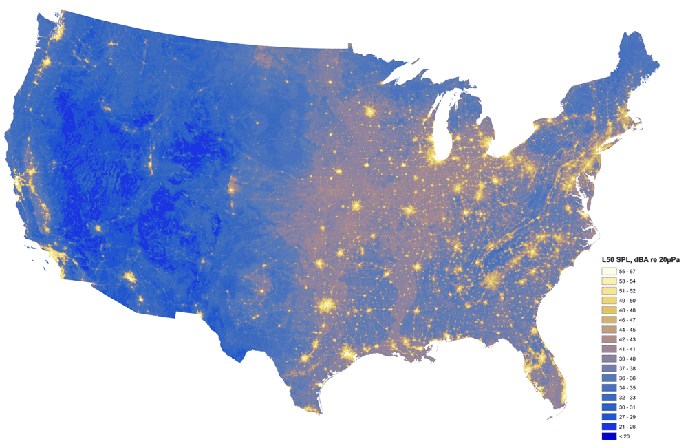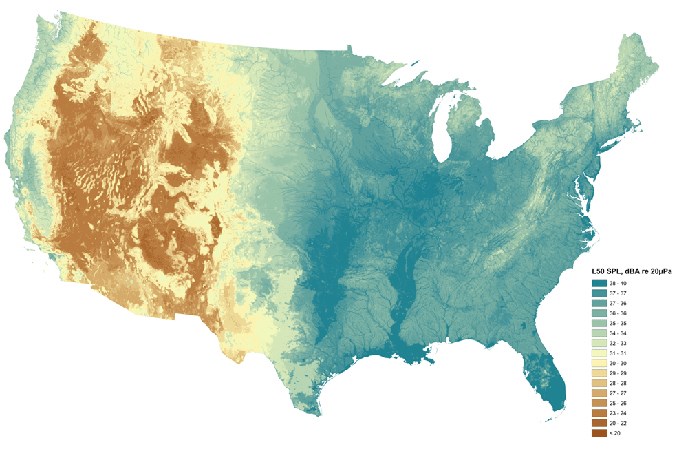Photo credit: Michelle Cipriano licensed under CC BY-NC-SA 2.0
by Daniel Fink, MD, Chair, The Quiet Coalition
The National Park Service noise maps show that without anthropogenic sounds–that is, human influenced sounds–nature is quiet. The top map shows existing noise conditions in the U.S., with the brighter yellow colors in cities being 53 A-weighted decibels* (dBA) and the dark blue less than 20 dBA average sound pressure level.

The bottom map shows natural noise levels without noise from human activities. The brown areas are less than 20 dBA average noise levels, the yellow near 30 dBA, and the darker green 38-40 dBA.

I recently had the opportunity to verify for myself that nature is quiet.
My wife and I spent a weekend at a destination wedding in a remote resort a few miles outside the western border of Yosemite National Park, in Stanislaus National Forest. She commented that our cabin was really quiet, so I decided to check exactly how quiet.
Using the NIOSH Sound Meter app, I measured the nighttime noise level to be 28.5 dBA (LAeq 29.4 dB), and the daytime noise level, when the wind wasn’t blowing through the trees, to be 30.1 dBA (LAeq 31.1 dB). LAeq is the average sound level measured in dBA, so it is just reported in dB but it is the A-weighted average measurement over time. I took a 30-second reading.
Our ears evolved in quiet, as did those of insects, birds, and small mammals who use hearing to find food or to avoid being eaten, to find a mate, and then to feed and protect their young.
Urban noise disturbs sleep and is loud enough to cause noise-induced hearing loss. It’s not natural.
I’m not saying we should all go back to living in the forests–I like my creature comforts too much for that–but if we can make the world a quieter place, that would be good for all its inhabitants.
* A-weighting adjusts decibel measurements for the frequencies heard in human speech.
